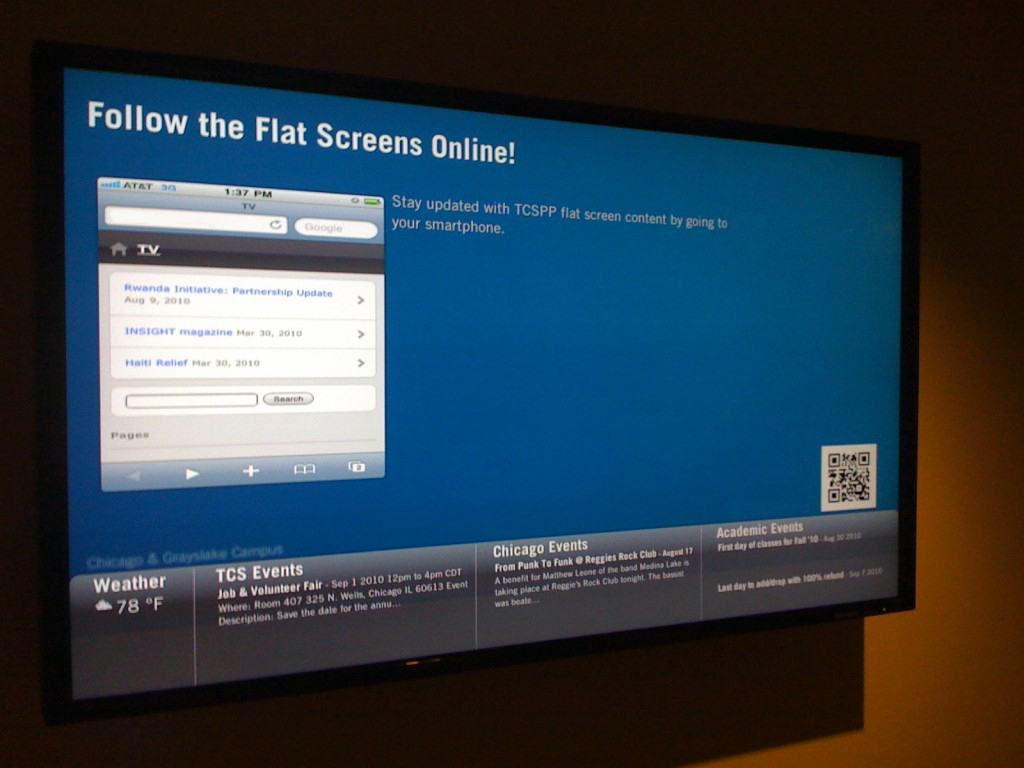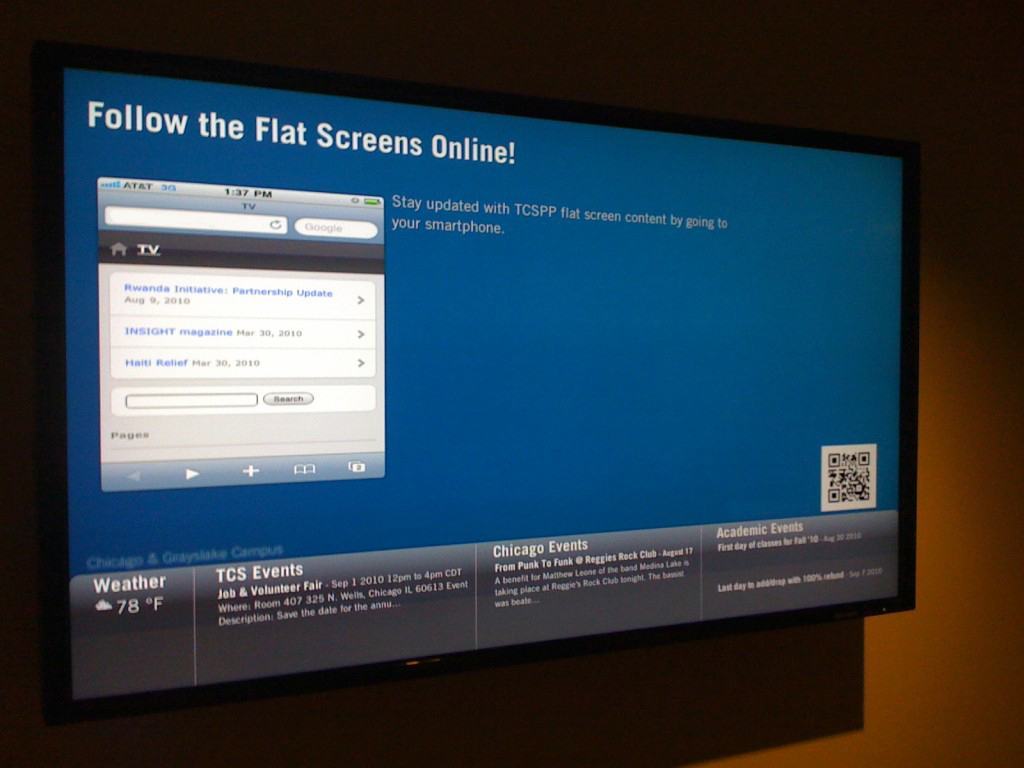
WordPress As A Digital Signage Platform
August 2, 2013 by Dave Haynes

I’m a huge WordPress fan and heavy user, with multiple blogs (like this one) and websites running off the web content management system. But I never really thought about it being used as the foundation platform for a digital signage network.
Then I traded emails with Nate Jones – who has taken WordPress and used it with some university clients as his digital signage CMS.
Jones is a web designer and front-end developer based in the Chicago area, and has fiddled around with WordPress to the point that he has posted his open source version of the project on GitHub and has paying clients who have had him customize it for their needs.
I asked Jones, who also handles digital strategy for Columbia College Chicago, if he would field a Q&A on what his WordPress is all about.
Q – I don’t think I have run into WordPress being used this way. Can you describe what’s going on?
A – WordPress has repeatedly proven itself as way more than a blogging platform and as a true – and truly customizable – CMS.
For the free version on GitHub, the theme is fairly simply putting posts into a carousel. I’ve added a few custom widgets that I found useful, but the true beauty of this is that you can do whatever the hell you want with it at a fairly low bar of programming knowledge.
So with a little time investment, you could make this WordPress digital signage theme customized for exactly what you need. Or you could pay me to do that for you. The basic version is free to use – it just can’t be resold.
Q – Why WordPress?
 A – I’d heard not only about the potentially towering costs of enterprise digital signage products, but also about how senselessly difficult to use and brutally ugly their backend interfaces are. WP is open-source & battle-tested. Anybody can learn to use WordPress in minutes.
A – I’d heard not only about the potentially towering costs of enterprise digital signage products, but also about how senselessly difficult to use and brutally ugly their backend interfaces are. WP is open-source & battle-tested. Anybody can learn to use WordPress in minutes.
For real; I’ve taught people who are amazingly good at their jobs, but are nearly clueless when it comes to anything on the screen. Also, the WP team is constantly releasing security updates, so while the WP platform could be a big target, there is ongoing development to improve the backend UI and, most importantly, address security issues.
Q – Is this a proof of concept or do you have something commercial in mind?
A – This was initially developed for a university in Chicago, and they’re still using it across multiple buildings all over their campus. It’s also being used at their campuses in Washington, D.C., and two in Los Angeles.
I have since developed more complex custom versions for clients that put the content management theory of structured content into practice. Meaning discrete screens for specific locations; custom fields for specific, pre-formatted information; basically meeting their exact specifications on the customer-facing screen, as well as role-based tailoring of the backend author interface for ease of use and to disallow rogue formatting.
Q – I assume what comes out of the wash, so to speak, is a web page and the transitions are sliders, etc, etc. How do you deal with things alike monitoring the display and ensuring stuff is on the screen if the connection drops off?
A – You’re exactly right. It’s really just a website – one that can be hosted traditionally on a publicly-accessible server, or locally for cost, security, or uptime concerns – that displays on the screen.
The theme is based on Zurb’s Foundation responsive design framework, so it will resize and reorganize the information based on the size of the screen that is displaying it. This makes it flexible when you suddenly decide to upgrade to the new bigger screen, but more importantly, fits seamlessly into our multi-device world by making the information accessible for the customer when they pull up the same URL on their smartphones.
As for dropped connections, there’s some caching going on in the background of the custom versions to help deal with that. I always suggest avoiding WiFi, and looking at the historical uptime of the host that you’re selecting.
Q – It’s a GitHub thing. Do you have other people using it?
A – The free version is being used in several schools, small businesses, and churches across the US, as well as by several cities, secondary schools and universities in Europe. A custom version is running the digital signage at the beautifully redesigned Yale University Art Gallery.
Q – The development work looks like it stopped eight months ago, or did you just get it to a certain point and that was that?
A – The development of the free version on GitHub has slow … er … stopped as I got busy with other things. I have been keeping track of the feature requests I’ve been receiving on Twitter, and now have some time to build a few of them in to that version. Development on the custom version has not slowed though; it’s just not on GitHub.
————–
Do I think this sort of thing should have many commercial software companies concerned? No.
But WordPress is a very nice, stable platform with a huge ecosystem around it for hosting, theme development, functionality plugins, and on and on. It is anything but a garage project, powering some 60 million websites.
For a lot of web and interactive people who get asked by clients what would be involved in getting screens up in stores or lobbies, WordPress would be a welcome option – because they’ll know it. A lot of those people will have never even heard the term digital signage, and have precious little interest in buying or renting new, unfamiliar software.



Leave a comment